
Trek is a bicycle brand that is highly trusted. Their range of bicycles is innovative and has been a revolution in the cycling world. But, are Trek bikes really as good as they claim to be? Are they worth the higher price point for average riders? These are some of the questions that people often have. To help you make an informed decision, let’s take a look at the history of Trek and how they have managed to maintain their position as a top bicycle brand.
In 1976, Dick Burke and Bevill Hogg founded Trek with the aim of delivering high-performance bicycles with great aesthetics that resonate with the rider’s personality. Trek’s advanced technologies ensure a smooth ride for both professional and amateur bikers who enjoy exploring new places on their bicycles as a way to escape from the stresses of daily life.
Today, Trek has a reputation for maintaining high-quality standards. They have over 1,700 stores throughout North America and their bikes are popular in several parts of the world, including the Netherlands, China, and Germany. So, if you’re looking for a reliable bicycle brand that offers innovative designs and advanced technologies, Trek is definitely worth considering.
So What is Trek Bikes Reputation Today?
Trek, a bicycle brand that started over four decades ago, has become a top-tier brand valued at over a billion dollars. Their name is synonymous with quality and innovation, and their logo can be spotted among the best performers in professional cycling competitions, whether on the road or on the trail.
Though they are known for producing high-end, competition-quality bikes, Trek also offers bikes in all styles, at a wide range of price points, making it accessible to entry-level and casual riders. This popularity extends to international sales, which account for 60% of Trek’s revenue. The fact that their products are adopted globally is a testament to their stellar reputation.
Why Are Trek Bikes So Popular?
Trek Bikes Have Some of the Best Framesets
The frameset is the heart and soul of a bike – it is the foundation upon which everything else is built. Trek, a beloved brand known for their mastery of this crucial component, has created framesets that are not only strong, light, and visually stunning, but also expertly calibrated with suspension systems.
At every price point, Trek frames are among the best, surpassing the basics with internal cable routing and storage compartments integrated into the frame. Their unique IsoSpeed frameset innovation challenges traditional framesets, resulting in a ride quality that is smoother and more comfortable than ever before. Trek’s dedication to excellence inspires us all to push beyond the limits and strive for greatness.
Better Design Geometry and Overall Feel
Trek, the renowned bike manufacturer, has come up with an innovative approach to simplify the process of evaluating frame geometry. They offer frames with alpha sizing, which makes it easier for riders to choose between small, medium, and large instead of calculating tube lengths and finding the geometry that suits them.
The brand is committed to building bikes suitable for all riders, men and women alike, and ensuring that the frames fit within a comfortable range. Their universal geometry allows everyone to access the full range of color and finish options, making it easier to pick the perfect bike.
Trek also specializes in tailoring geometry to the rider’s needs. For instance, their Domane bike offers both endurance and pro-style builds, making it suitable for an upright or aggressive riding position, depending on what the rider requires.
Built for Performance
The point of all the fancy tweaks and cool innovations to Trek bikes’ frames and shapes is to squeeze out every bit of performance advantage that can be found. Whether you’re cruising on an e-bike, a road bike, or a mountain bike, you’ll get a comfortable ride that works great on the terrain you’re taking on.
Part of this is because Trek bikes are obsessed with weight cutting. Trek road bikes are light and stiff, with a really smooth and slim design. Their mountain bikes are built with tougher materials to handle the rough stuff, but they’re only as big as they need to be for safety and the best handling possible.
But wait, there’s more! Trek bikes are made using only the best components around. The brakes, drivetrain, shifters, and tires – everything that Trek doesn’t make are sourced from only the best brands and put together with the greatest care.
Popular Appeal
As with any product with a reputation for reliability and performance, Trek bikes are loved by cyclists all over the globe. Their long history contributes to this, as a community that supports the brand over all others has developed over the decades.
It helps that the Trek name is likely to pop up anywhere that cycling is involved. The company contributes to community biking initiatives and encourages youth participation in cycling for healthy, wholesome fun. People have a positive view of this company for a reason.
And, any bike that shows up in practically every type of race, including the Tour de France itself, is going to garner a following.
As long as Trek continues to make bikes worthy of such lofty positions, they will remain popular.
Superior Build Quality
The material used to construct a bike’s frame significantly affects its longevity and ride quality. Trek knows this and has pioneered increasingly sophisticated materials and construction technologies to build better bikes.
Their carbon fiber frames are incredibly light and also meet the stringent Optimum Compaction Low Void specifications. OCLV frames are constructed with such tight precision that they are considered aerospace quality.
Yet, it’s not all about space-age materials. Trek also makes bikes using aluminum. In keeping with their cutting-edge identity, the manufacturer has developed Alpha Aluminum frames, which strategically vary rigidity and flexibility to increase comfort.
The aluminum is also hydroformed, which allows for exact control over the contours of each tube. This allows for frames to have optimized aerodynamic qualities from all angles.
Trek’s “Invisible welding” creates a bike without visible join points. This is not only aesthetically pleasing but also contributes to structural integrity.
State of the Art Suspension System
Mountain bike suspension is arguably Trek’s greatest innovation. Their patented Full Floater suspension system works in tandem with other unique design components to give singular performance over even the roughest terrain.
The Full Floater suspension is mounted separately from the frame. Instead, the shock is held between a point on the rocker link and the swing arm. The result is a suspension that seems to have endless travel, “floating” smoothly through its range.
Another Trek invention, the Active Braking Pivot, or ABP, also directly impacts the suspension. Traditionally, braking can lock up suspension, forcing cyclists on hard trails to choose between jarring, bone-rattling stops or risky high-speed riding. ABP relocates the brakes and pivot point so that they don’t interfere with suspension, so it continues to work even when stopping or slowing down.
The Sky’s the Limit for Trek Mountain Bikes!
Trek holds every bike it manufactures to a standard of excellence, and it shows. Yet, the company’s commitment to increasing the safety and performance of mountain bikes has spawned many of the features that now set its brand apart.
From the IsoSpeed frameset to the Full Floater suspension and EVO frame geometry, Trek has literally changed the shape of mountain bikes and redefined their limits.
And, within the Trek Performance Research Lab, they strive to improve even further. But it’s not just the future that brims with potential.
Trek mountain bikes offer industry-leading performance in the present, encouraging trail riders to tackle steeper slopes and rockier paths than lesser bikes would allow. And those same innovations led to seven Tour de France winners reaching the finish line astride Trek bikes.
With 1.6 million sales each year and a growing customer base around the world, it’s clear that Trek isn’t slowing down. With their willingness to take on the risks inherent in forging a path away from the status quo, there’s no predicting how far they’ll go.
Company History in Brief
The Trek Bicycle Company began in the minds of Richard Burke and Bevil Hogg. In 1976, the idea became reality when they founded the company in Waterloo, Wisconsin, with an old barn serving as the base of operations.
During their first year, the company produced 805 high-quality steel bike frames, which were welded using silver braze instead of brass. This was an early indication of their commitment to excellence. The company’s success was immediate, and they quickly expanded their operations beyond their home state.
By 1978, they were selling fully constructed bikes across the United States. Their sales continued to grow throughout the following decade, nearly doubling each year. In 1983, they introduced their first mountain bike, the model 850. As they continued to grow, they embraced new technologies and created their own innovations. They released their first aluminum bike in 1985, followed by a carbon composite model in 1986. Notably, they were the only large bike manufacturer still producing bikes in the U.S. at that time.
Today, with 1,800 employees and selling bikes in over 1,700 specialist shops across the U.S. and 90 countries worldwide, Trek has become a major player in the cycling industry.
Where are Trek Bikes Made?
Trek’s American-made heritage served them well in their early years. For decades they maintained some level of production in the U.S., though more and more of the manufacturing process was taking place overseas.
By 2015, only 1% of Trek bikes were made in America — roughly 10 thousand bikes per year. However, this came to an end in 2017, when the carbon fiber frames that were the last models produced wholly in Wisconsin began to be produced in China.
Today, Trek bikes are made in China, Germany, Holland, and Taiwan. The company’s hometown pride had to give way to the hard realities of the cycling industry.
In the 1980s, Schwinn, a major bicycle manufacturer, relocated all of its production to China, setting a new standard for the industry. To stay competitive with low prices, other major manufacturers, including Trek, had to follow suit.
However, this does not mean that no work is being done at Trek’s warehouses in Waterloo and Whitewater. For instance, frames welded in Taiwan can be painted in Wisconsin. Additionally, parts may be fabricated in one country, while assembly takes place in another. Trek is a truly global company.
Is Giant or Specialized Bike Brand Better Than Trek?
You can’t discuss Trek without the inevitable comparisons to other big names in the industry. Giant and Specialized in particular compete with Trek in practically all categories, from MTBs and e-bikes, to component manufacturing. So, which is the best?
The truth is that all three companies create quality bikes. Giant offers the most price range, offering some truly budget offerings that have fueled its production of over 6 million bikes a year. Meanwhile, Specialized has less variety in its lineup but can edge out the other two in component quality on its entry-level offerings.
While each company has its own tweaks to frame geometry and seeks to improve performance in different ways, Trek is the leader when it comes to innovation among them. The brand’s generally higher price point is explained by such cutting-edge tech.
However, comparable models are available for each brand. The choice ultimately comes down to personal preferences and needs regarding fit and finish and design appeal.
Bike Range
The Trek Bicycle Company is renowned for its incredible mountain bikes, as they provide great performance and comfort during off-roading. However, it’s worth noting that Trek offers a full range of bicycle options, all of which are just as impressive as their MTBs.
The company initially started with steel-framed road and touring bikes, and they have spent over four decades refining that riding experience while simultaneously taking on new challenges such as MTBs, hybrids, and e-bikes.
Trek Road Bikes
Trek road bikes are broadly grouped into four primary model designations: Emonda, Madone, Checkpoint, and Domane. Other, older models simply use numerical designations.
The Emonda is the high-end model, built to the exacting standards of weight and aerodynamic qualities required by pros in competition. These bikes have aluminum alloy or OCLV carbon fiber frames and feature top-tier Shimano drive trains, tubeless-ready wheels, and hydraulic disc brakes.
Domane bikes represent the entry-level segment, with frames and bikes that are more affordable for the average buyer. Their aluminum alloy construction is calibrated for optimal performance. The included components are not top-of-the-line but still mid-range options from the same reputable manufacturers.
Trek Mountain Bikes
Of course, as the MTB industry leader, Trek has a wide selection of mountain bikes, all tooled to the max with innovative features. They offer their unique full suspension, classic hardtails with front fork shocks, and lighter bikes for trail and cross country.
The Slash is the pricey, cutting-edge enduro model. It’s equipped with floating RockShox suspension, a durable aluminum alloy frame, and 29-inch wheels. Meanwhile, the Roscoe model has a RE:aktiv damper for more responsive pedaling and several similar features.
The entry-level model for MTBs is the Marlin. It’s a hardtail model, a change that allows for a significant price reduction compared to full suspension models while still including high-end features like internally routed cables and disc brakes.
Trek Electric Bikes
In recent years, e-bikes have exploded in popularity and are credited with bringing thousands of new cyclists into the fold. Trek has not missed out on this trend, offering electric options in every category.
For road bikes, the Verve and Rail models offer the same aerodynamic frame geometry as regular bikes. Weights are higher due to the addition of motors like the Bosch Active Line and the requisite battery.
The Domane models are at the higher end of the spectrum, offering carbon fiber frames that help keep it among the lightest of e-bike options. At the other end is the Townie Go series.
These cruiser-style e-bikes accommodate casual riders or those with mobility issues, sporting features like step-through frames and wider seats and tires.
Trek Hybrid Bikes
Trek’s hybrid bikes are a combination of road and mountain bikes that have wider tires and lighter frames. They allow you to ride mildly off-road while also providing larger tires and upright geometry for road riding. The components such as tires and drivetrains define hybrids as much as the frame, and they offer more than enough gears for either application.
Trek offers many lines of hybrid bikes, including the Verve and Townie Go, as well as hybrid specific models like the Dual Sport, FX, and Vale. For younger riders, Trek also offers the Precaliber bike line.
Top 3 Trek Bikes To Consider
1. Domane SLR 7
The Trek Domane SLR 7 bike is the latest addition to the Domane range. It is designed to offer an exceptional on and off-road experience with its smoothness, practicality, comfort, and versatility.
The bike is more aerodynamic than its previous models and features compliance-enhancing decouplers on both the front and rear, which improves rider comfort and pedaling efficiency. The bike’s steering is light and precise, and the mellower edge provides more stability than a conventional road racing bike.
The Domane SLR 7 boasts a sophisticated and premium feel that makes it an excellent purchase. Moreover, it is priced reasonably, making it a great value for money.
What are the Pros?
- Stylish look.
- Robust enough to provide excellent stability on rough roads.
What are the Cons?
- A little heavy.
2. Émonda SLR 9 eTap
Trek has manufactured a specific bike model for pro racers, which the company claims to be the fastest climbing bike ever. The bike features a power meter, an aerodynamic frame with reliable disc brakes, and wireless electronics, all of which weigh less than 15 pounds.
It is a stiff, responsive, and fully customizable bike that delivers improved, confident handling. The SRAM RED eTap AXS drivetrain ensures a smooth and quieter ride, while the Ultralight wheels help push performance beyond limitations. The bike is designed especially for climbing and is faster on flat roads, and despite its lightweight, it is as strong as a steel girder.
What are the Pros?
- Light & better aerodynamics.
- Proper handling during racing.
What are the Cons?
- Slightly expensive.
3. Trek Roscoe 7
The Roscoe 7 bike is a versatile bicycle that offers multiple low-range options to assist with climbing steep hills. Its 27.5-inch wheels ensure easy maneuverability in tight terrains, while the shorter stem and wider handlebar provide better control. The 27.5+ wide tires deliver more stability, traction, and confidence.
The bike is made of a premium-quality Alpha Gold Aluminum frame that has internal routing for efficient cable protection and a neat look. The Roscoe 7 bike is an excellent choice for any terrain, be it for a new rider or a professional biker, because it is stable and smooth.
What are the Pros?
- Better off-road handling.
- Aesthetically pleasing.
What are the Cons?
- Slightly on the heavier side.
Conclusion
If you’re thinking of buying a mountain bike, it’s important to know that Trek offers many different models with various features, performance levels, and prices. Before you start looking, you should think about what you want in a bike and how much you can afford to spend. You can also ask your friends who are into biking for advice. This article highlights the top three best-selling Trek mountain bikes and invites readers to share their own experiences with Trek bikes in the comments section below.




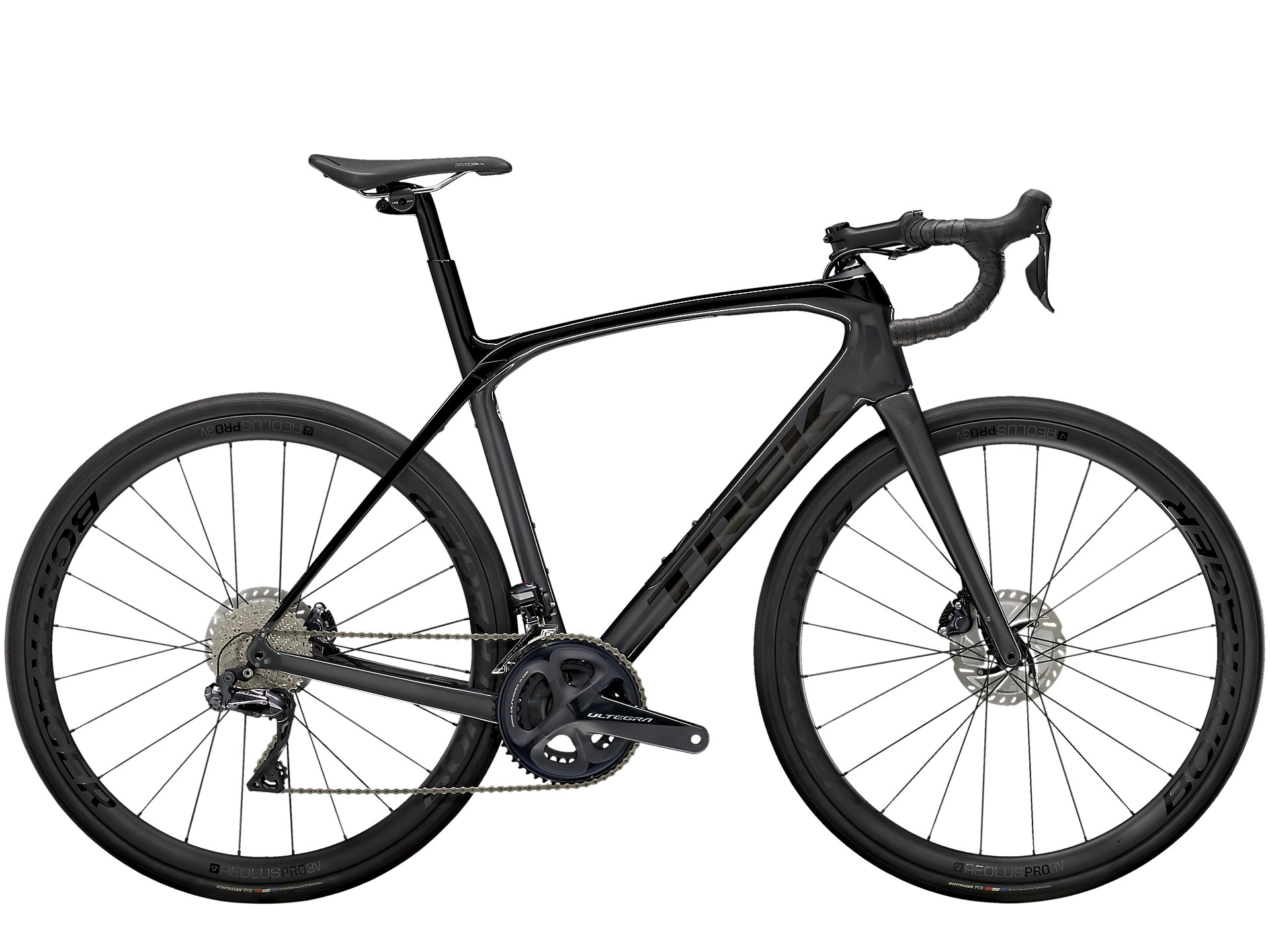
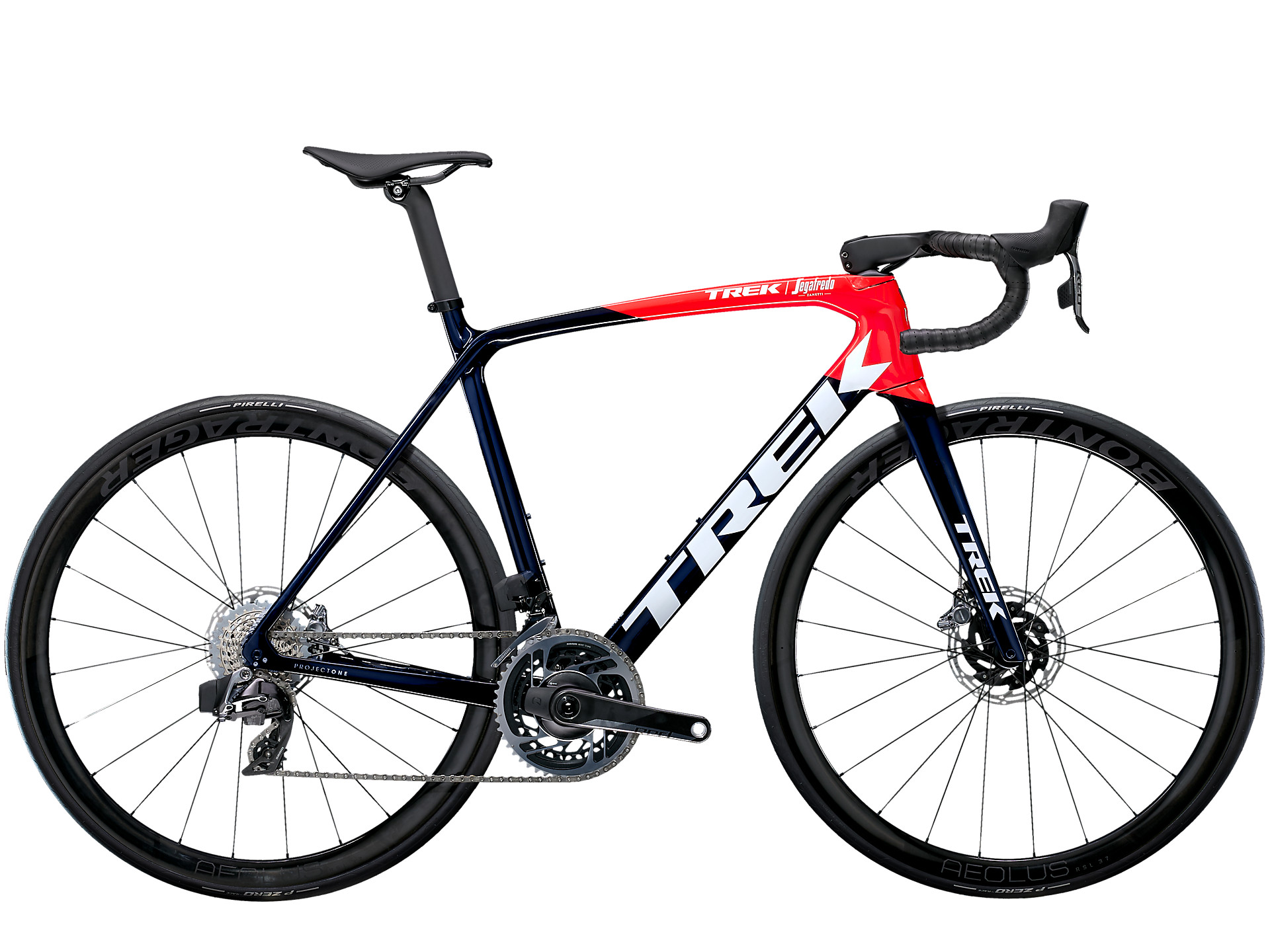
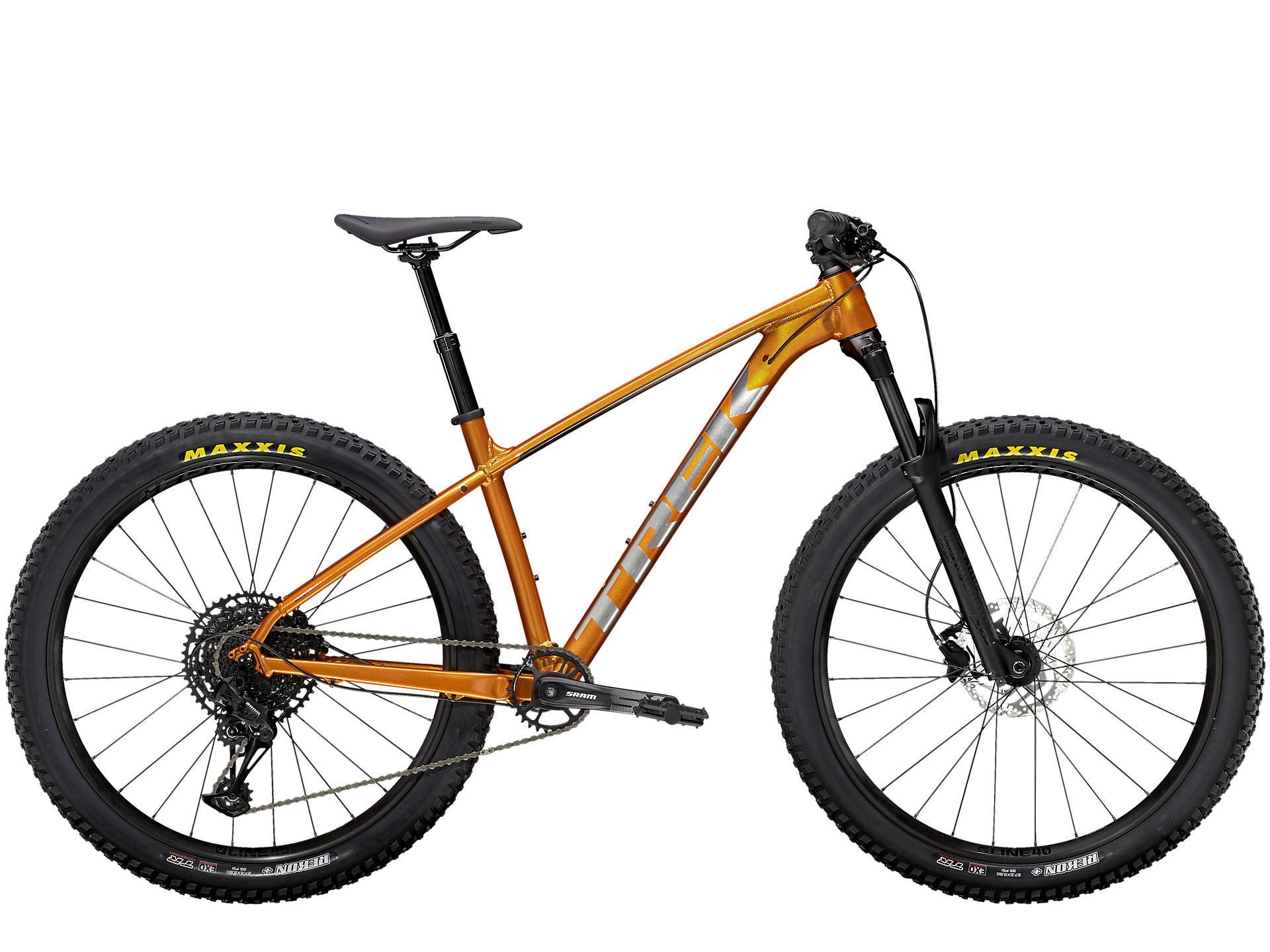




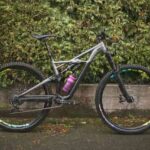

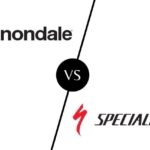

Thank you for sharing